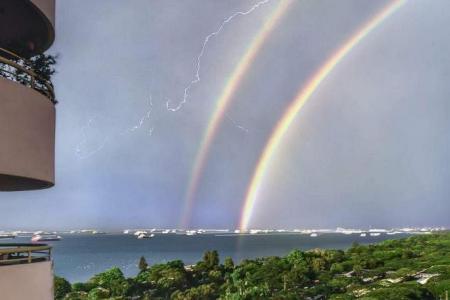Giant double rainbow spotted in Singapore
Sky gazers around Singapore were dazzled by not one, but two rainbows streaking across the sky on Friday morning.
Social media users shared their photos which were taken from several places including Changi, East Coast Park, Tanjong Rhu and Woodlands.
The Straits Times looks at the science behind the multicoloured natural phenomena and everything else you need to know about rainbows.
Q: How rare are double rainbows?
Those familiar with the viral video of an awestruck American weeping with joy as he exclaims “double rainbow all the way across the sky” and “what does this mean” in 2010 might be led to think that the phenomenon is rare.
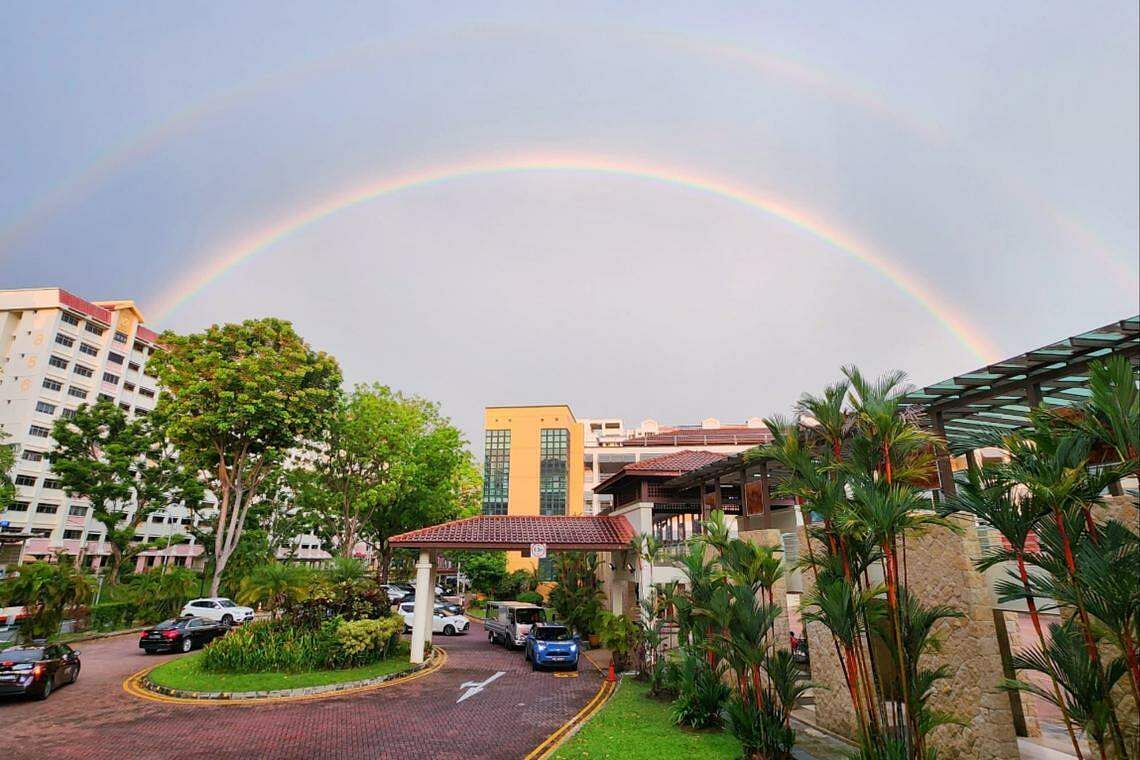
Getting two of such displays at one shot is actually relatively common.
This is especially so at times when the sun is low in the sky such as in the early morning or late afternoon.
Q: What is a double rainbow and how do they form?
A rainbow forms when light from the sun or moon strikes water droplets and is scattered.
As light enters the raindrop, it bends in a process called refraction and splits into different wavelengths, which correspond with different colours. Longer wavelengths of light appear red and orange and are bent the least, while shorter wavelengths of light look blue and violet and are bent the most.
The light waves reflect off the circular edge of the raindrops and bend again as they exit the raindrop, further spreading the colours.
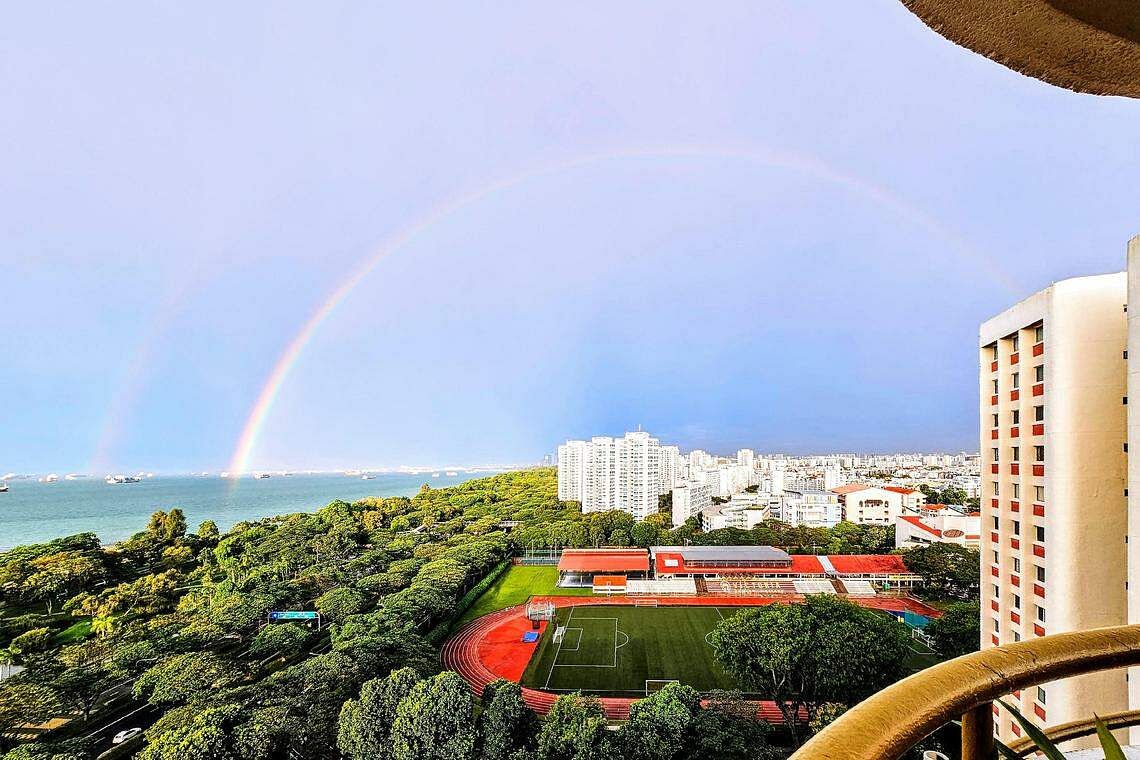
As raindrops are relatively round when sunlight refracts through them, a rainbow is shaped like a spherical arc that soars across the sky.
Double rainbows occur when light is reflected twice within a raindrop, producing a secondary rainbow above the primary bow.
Due to the double reflection, the secondary rainbow’s colour sequence is reversed, with red on the inside and violet on the outside. It also appears fainter as fewer light rays are available to undergo the additional refraction process.
The arc is dispersed over a wider area of the sky and is nearly twice as wide as the main rainbow, according to Britain’s Met Office.
Triple and even quadruple rainbows are possible, depending on how many times refracted light is reflected within a raindrop, according to The Weather Channel.
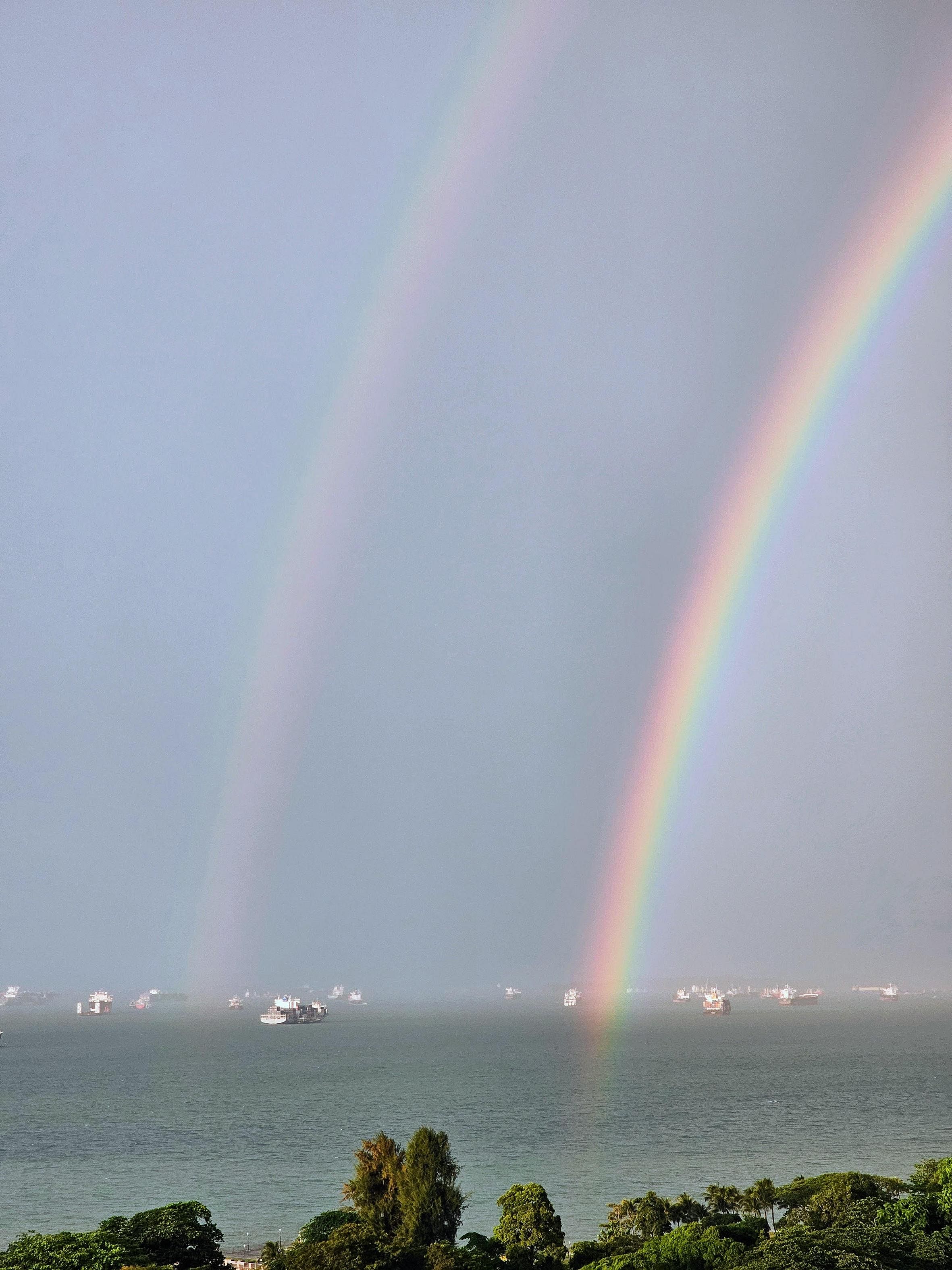
However, they are much rarer since the concentration of light rays available for reflection and refraction decreases.
It was only in 2011 that scientific journal Applied Optics published what is likely to be the first photographic evidence of a triple rainbow.
Q: Is it possible to find the end of the rainbow?
Unfortunately, rainbows are optical spectacles, which means there are no pots of gold at the end of a rainbow awaiting enterprising rainbow chasers.
As rainbow watchers move, their view of the sky changes relative to the sun. This means that the colourful curves will either appear to travel with them as they start to see colours reflected from rain in another part of the sky or fade away if there is insufficient rain or sunlight.
Q: Why are there rainbow clouds?
Iridescent clouds appear because of diffraction, a phenomenon that occurs when tiny water droplets or ice crystals scatter light from the moon or sun.
These colourful clouds are relatively scarce because they must be thin and have plenty of water droplets or ice crystals of a similar size.
In January, cloud chasers captured ethereal images of rare “mother-of-pearl” clouds floating above Scotland.
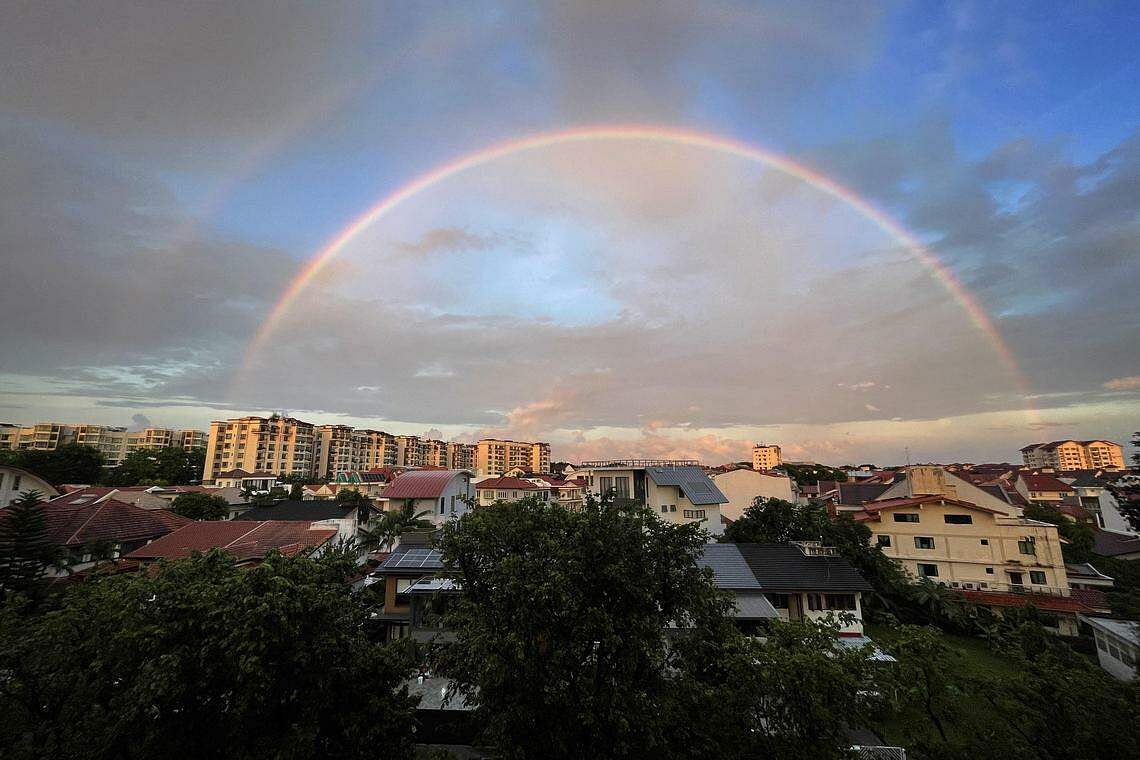
These nacreous or polar stratospheric clouds develop in frigid air above polar regions and are named after their pastel colours that resemble a mollusc’s hues.
In 2022, a iridescent pileus cloud filmed in China mesmerised netizens across the world. The cloud, also known as a scarf cloud, forms above a rapidly rising cumulus cloud.
While not as dramatic, rainbow clouds were also spotted here in May 2022.
Q: What are the best conditions to see a rainbow?
To see a rainbow in the sky, the sun must be behind the viewer at a 42 degrees elevation or lower.
Bright sunlight and suspended droplets of water from rain, spray or fog are essential, according to the Australian Government Bureau of Meteorology’s website.
The best weather conditions to catch a rainbow is on a partly cloudy day, when sunshine can break through the gaps between the rain clouds.
If the moon is bright and hangs close to the horizon, its light can also refract and reflect in raindrops, producing nocturnal rainbows.
- Sources: The Weather Channel, Australian Government Bureau of Meteorology, US National Oceanic Atmospheric Administration, Institute of Science and Technology Austria, Met Office
- Additional reporting by Chin Hui Shan
Get The New Paper on your phone with the free TNP app. Download from the Apple App Store or Google Play Store now

